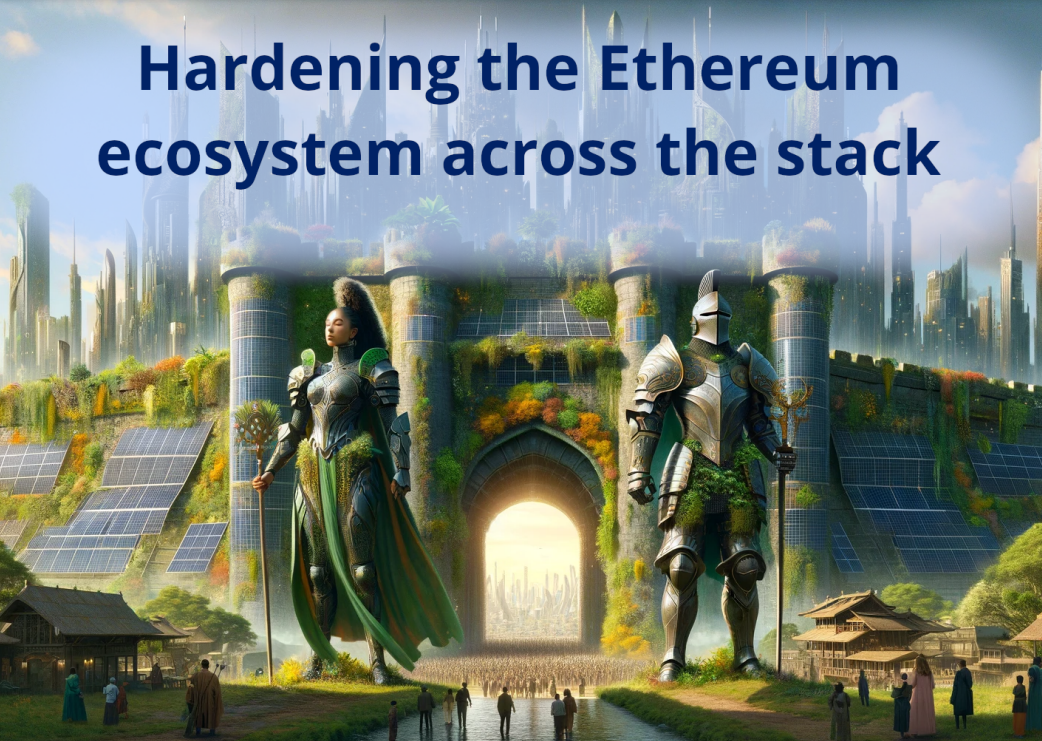Hardening the Ethereum Ecosystem - Censorship.wtf
Source : https://www.youtube.com/watch?v=Pt8W6OyU87k

The interface layer (1:46:10)

Hardening ethereum against censorship requires addressing issues across the stack - including the application interface layer.
Many dApps have complex interfaces that wrap smart contract functions. Censorship is possible if those interfaces are centralized or rely on centralized APIs
Simple token swaps are easy to recreate alternate interfaces for. But complex cross-layer interactions like signing messages across layer 2's are harder.
There should be a push towards open protocols and also having open source alternative interfaces available for every major protocol.
Centralized node providers (1:50:30)


Centralized node providers used by dApps and wallets are a censorship risk. This is worse for layer 2's than layer 1.
Lazy integration like relying on centralized provider signatures makes censorship easier VS using trustless approaches.
Node provider centralization on layer 2 is currently very high. As ethereum transitions to layer 2s, we must ensure fundamental values like decentralization are not sacrificed.
- We can armor existing providers and connect to multiple ones to have "defense in depth" rather than trusting one.
- Using light clients and getting Merkle branches from providers allows validating their responses.
- Talking to multiple providers increases security and openness - a theme in censorship resistance.
Ultimately we need better decentralized node providing protocols and client diversity.
L2 Sequencers (1:55:00)

Centralized layer 2 sequencers are a censorship and funds seizure risk. Censorship can turn into a funds attack over time.
Strategy 1 : We can force inclusion protocols allow getting around censorship by publishing transactions directly to layer 1. But these are complex, barely usable now.
Anti-censorship strategies need good UI/UX. Historical examples like OTR messaging (Off The Record Messaging) made it easy to forge messages for deniability.
Force inclusion protocols need simple interfaces created by independent teams to be practical censorship mitigation tools.
Strategy 2 : Decentralized sequencing allows many parties to participate in block production without centralized control points.
Economic attacks are still possible in decentralized systems. Client and contract diversity helps create "herd immunity".
Having open standards allows new clients and contracts to easily integrate into the ecosystem.
Cross-L2 bridging (1:59:00)

Cross-layer 2 is easy, as we have lots of protocols with different technologies but current options are centralized or excessively governance-based.
Need more open stantards for this. Having open standards allows new clients and contracts to easily integrate into the ecosystem.
P2P Layer (2:00:00)

Little attention has been paid to peer-to-peer networks compared to other layers in blockchain systems. Juan Benet (Preventing Digital Totalitarism speaker) consistently cares about and contributes to peer-to-peer technology like Libp2p and Ethereum.
Peer-to-peer networks are vulnerable. An adversary could take over the majority of Ethereum nodes fairly easily and cheaply (for less than $500k). This is a risk that needs addressing.
Stronger anti-DoS (2:01:00)

Possible solutions include stronger denial of service protections and a zero-knowledge "civil resistance protocol" based on proof-of-stake that allows anonymous, rate-limited messaging rights.
This protocol could help identify validators on the peer-to-peer network and prioritize them so that Ethereum stays safe if the network is attacked.
The social layer (2:02:00)


Social layer attacks have happened before, like Bitcoin censorship campaigns. If Ethereum grows, similar social manipulation attacks could occur.
Rather than push one viewpoint, social media attacks often try to amplify extreme voices on all sides to cause general chaos.
Twitter has less insider attack risk but external risks. Ethereum research forums have more insider risk. Understanding these threat models matter.
A key risk is a 50/50 split in the community over a contentious issue that doesn't warrant a chain split. Better signaling helps avoid this :
- Tools like carbon vote have allowed signaling positions with ETH holdings. This could be extended to Poaps, ENS names, etc to better gauge community perspectives.
- Zero knowledge reputation can help create signaling mechanisms for those with a standing in the Ethereum community.
Conclusions (2:06:30)

If the US government or any other government wanted to censor Ethereum, they have 2 possibilities :
- Literally go and buy up 18 million ETH and they would grab up the validators.
- Buy up 60% of the LIDO tokens and make Lido censor
The second choice is way cheaper. You just go through all of these other things that are much weaker that we don't even think about and so it's worth moving forward to better harden all of the layers and really think about all.